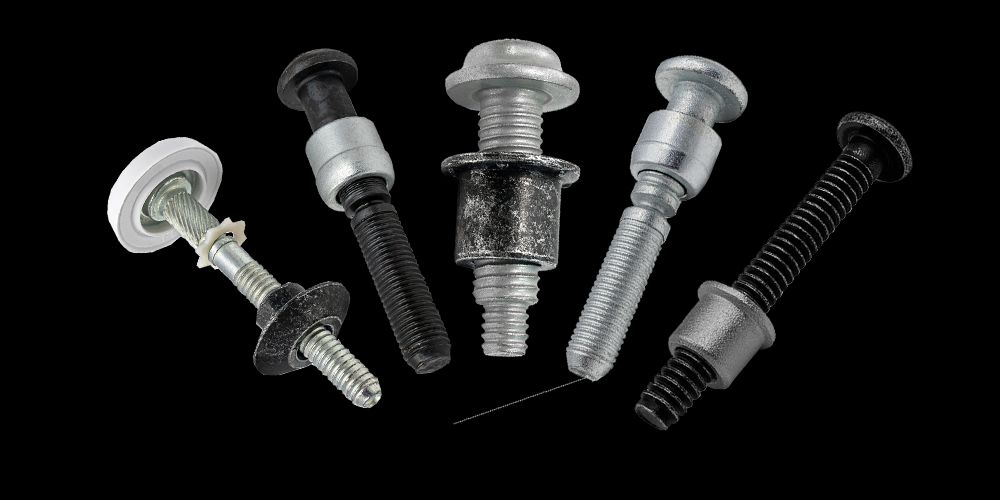
What is a Lockbolt? Benefits Over Traditional Fasteners
Lockbolt is a two-piece fastener consisting of a metal pin and a metal collar. A special installation tool grips the pintail of the lockbolt and creates a high-strength, vibration-resistant joint by mechanically swaging the collar into pin grooves forming a clamp force to hold assembled parts together.
Lockbolts are extensively used in places where major safety concerns and standard reliability are taken into consideration like Aircraft assembling, locomotives, mining equipment, truck trailers, etc.
Why Use Lockbolt? Key Advantages Over Traditional Fasteners
Lockbolt consists of two-piece fasteners, here a pin and a collar are used to achieve superior strength and consistent performance instead of using traditional nuts and bolts or rivets. If high resistance, durability, and vibration resistance fasteners are required then Lockbolt is the go-to option, delivering unmatched reliability, long-term performance, and fail-safe security for critical appliances.
As of now, lockbolts have become one of the popular types of fasteners for construction, manufacturing, transport, mining, and many other industrial outputs. Due to the high carbon content in lockbolts, their strength is significantly enhanced, providing superior tensile and shear resistance compared to standard fasteners.
Advantages Of Using Lockbolts
Some of the advantages of using lockbolts over traditional fasteners are:-
- Permanent Fixation– The swaging process, it creates a permanent bond between the joints, which certainly eliminates the possibility of joint loosening over time.
- Advanced safety standards– Loose fasteners may create catastrophic failure hence, using lockbolts will improve the tensile strengths between the joints and eliminate the risk of loosening the fits under critical applications working in a real-time environment.
- Vibration Resistance– Lockbolts consist of two-piece fasteners, it create a stronger bond between the joints by mechanically swaging the collar into the pin grooves, which ensures a permanent and vibration-proof connection.
- Less maintenance required– Due to the strong connection between the joints lockbolts significantly reduce the maintenance needs, saving time and costs.
- No locking mechanism required– Traditional fasteners may require lock washers or sealants to permanently lock the joints but lockbots don’t require any locking mechanism due to its two-piece fastener accessibility.
- Quick installation with simplified process– Traditional bolts may require some time for tightening and alignment of the appliance but lockbolts enable rapid, one-step installation with specialized tools. A quick and simplified process enabling the reduction in labor cost ensuring consistent high-strength joints.
Conclusion
If you are considering a fastener solution that combines unmatched strength and high performing mechanism then lockbolts are the key, delivering superior load distribution, and ensuring an apparatus that is less resistant to vibration. A simplified and safe solution for connecting structural and mechanical components, lockbolts reduce the risk of human errors which makes it ideal for high-risk industries like bridges or offshore rigs. Due to its advanced standardized mechanism, lockbolt technology is boosting worksite safety by eliminating the risks like loose joints, and repetitive maintenance. Traditional bolts are prone to loosening under vibration which requires frequent tightening which makes them less reliable than modern lockbolts solutions.








